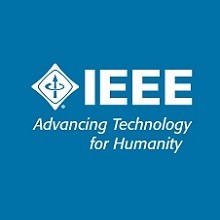
ارزیابی میزان آلودگی سطح عایق بر اساس فناوری LIBS
Abstract
I- Introduction
II- Experiment
III- Analysis of Experimental Results
IV- Conclusion
References
Abstract
As one of the most important external insulation equipment in power system, insulators play an important role in transmission and distribution network. In this paper, qualitatively and quantitatively analysis of the contaminated elements on the surface of artificial contaminated insulators and natural contaminated insulators were carried out by Laser-Induced Breakdown Spectroscopy (LIBS). For artificial contaminated insulators, Na and Al elements can be used to characterize the equivalent salt deposit density (ESDD) and non-soluble deposit density (NSDD) levels respectively. For natural contaminated insulators, there are differences in spectral intensity of contaminated elements with different contamination years. And with the increase of the contamination years, the spectral intensity of the Si, Fe, Ca, Al, K and Na elements also have an increasing trend. Insulator samples under 4 contamination levels were classified based on the principal component analysis (PCA) algorithm. Dimension reduction analysis was conducted by extracting 6 excitation spectra (Si, Fe, Ca, Al, K, Na) which can represent contamination information. The 2 principal components with the largest contribution rate were obtained and the principal component scores of each spectrum were calculated. The research results showed that the spectral sample points have obvious convergence phenomenon according to the contamination level of the insulators. Compared with the commonly used methods for judging contamination level, LIBS technology has the advantages of easy operation, no sample processing and high sensitivity. Therefore, the combination of LIBS technology and PCA algorithm can save time and cost and improve the detection efficiency in the field of insulator.
INTRODUCTION
As one of the most important external insulation devices for power system, insulators play an important role in the transmission and distribution networks. With the development of China, the environmental pollution caused by the daily activities of industry and humans is also increasing. The contamination on insulator surfaces will affect its external insulation performance. In severe cases, it will cause flashover, and the flashover on transmission lines will cause large-scale power outage, which will result in power system failure and bring huge economic losses [1]. Therefore, the evaluation of insulator contamination is the basic research work in the field of external insulation of power systems, which is of great significance for the design, operation and mainten.ance of external insulation of power systems. A large number of scholars at home and abroad have conducted a lot of research on insulator contamination detection and achieved a series of outstanding results, which have greatly reducing the power system failure caused by contamination flashover [2,3]. At present, the most common method of measuring contamination is to remove the insulator from the power line and then determine the contamination level by measuring the equivalent salt deposit density and nonsoluble deposit density [4]. However, this method is complicated in operation and needs to be powered off, which is not convenient in practical operation [5]. Reference [6] installed metal electrodes on the surface of insulators, which can determine the contamination degree of insulators by measuring the surface conductivity of insulators when the air humidity is relatively saturated. The ultraviolet discharge pulse signal will appear when the leakage current is generated on the insulator surface. The relevant characteristics of the leakage current can be obtained and the contamination degree can be determined by analyzing the signal with a certain algorithm [7]. However, the exact relationship between the current leakage current and the degree of contamination has not been fully clarified, and the installation of the equipment is also complicated, and the degree of environmental impact is relatively large.
